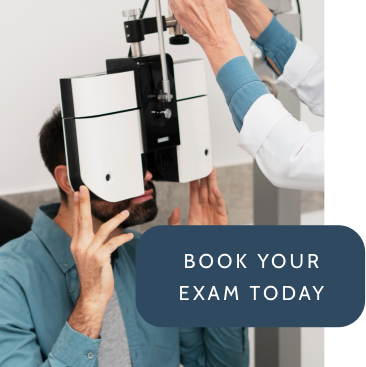Your children use their visual system for everything, whether throwing a pitch, kicking the soccer ball, or reading their favorite novel. Problems with vision can be frustrating for children and even affect their self-esteem.
Vision therapy is a proven method to help kids maximize their visual skills and set them up for success. It can help remove the roadblocks holding them back from improving their academics and hobbies.
At your child’s eye exam, Dr. Zargar’s optometry team can comprehensively assess their eyes, visual function, visual acuity, and more to determine if vision therapy is the best treatment for your child. It is good practice to have annual eye exams for children to ensure visual problems are not arising.
What is Vision Therapy?
Vision plays a significant role in your child’s life in every activity. They read the whiteboard in class, need hand-eye coordination to play on the playground, and more. If eye control, focus, or vision is causing difficulty in your child’s life, working on visual skills with an experienced optometrist can improve the problems.
Some of the most commonly trained visual skills include:
- Eye movement control
- Convergence
- Visual thinking
- Visual memory
- Depth perception
- Visual-motor skills
Just as you train your body, you can also train visual skills. Your optical system isn’t just your eyes but the brain and eyes working together. Vision therapy works to retrain the brain to strengthen that connection.
You’d be surprised how much people rely on this connection between the brain and eyes to flourish at school, in sports, art, and other hobbies. Vision therapy aims to re-establish a link between the visual system and the brain to build functional skills to increase vision, comfort, and performance.
Orthoptic Vision Therapy
Your eyes are designed to work together. Binocular vision, where the brain receives signals from both eyes, judges distances and depth, and coordinates eye movements.
Orthoptic vision therapy uses evidence-based eye exercises to improve binocular vision, eye movement, and eye alignment problems common in conditions such as amblyopia or strabismus.
Perceptual Vision Therapy
For reading problems or learning delays, perceptual vision therapy uses exercises to develop more robust visual processing and perception skills.
Neurolens
Neurolens glasses are designed for individuals who experience symptoms related to Binocular Vision Dysfunction (BVD). BVD is when the eyes have difficulty working together as a team, causing the brain to exert extra effort to merge the images from each eye.
Neurolens glasses have a contoured prism that gives a gentle nudge to the eyes, helping them align better for both close-up tasks (like reading) and distance viewing. The strength of the nudge can change depending on where you’re looking through the lens. The glasses are tailored specifically for your eyes’ unique needs based on the Neurolens test. Not everyone will need the same amount or type of contoured prism to see a benefit.
Eye Conditions Treated With Vision Therapy
Amblyopia
Amblyopia, often called lazy eye, commonly occurs in a single eye and develops when there’s a breakdown in the brain’s connection to one eye. As amblyopia progresses, your brain relies increasingly on the stronger eye for vision while suppressing the weaker eye, making it worse.
Vision therapy exercises and methods can help strengthen the connection between the weaker eye and the brain to restore binocular vision.
Strabismus
Also known as crossed-eyes, strabismus occurs when the eyes look in different directions. Mild strabismus may not be obviously misaligned, so having your child’s vision examined regularly can allow your optometrist to detect the signs early.
Whether your child’s strabismus is severe or subtle, vision therapy can help train the brain and eyes to look in the same direction, helping them to focus on and perceive objects more accurately.
Convergence Insufficiency
As you look at nearby objects, your eyes work together to maintain a single, clear image of what’s in front of you. When a child has convergence insufficiency, as things move closer, the eyes don’t turn inward to focus, leading to blurry or double vision.
Convergence insufficiency can affect even basic tasks like reading, so talk to your optometrist about vision therapy for treatment.
Vision therapy can also help with the following:
- Reading problems
- ADHD
- Post-concussion, brain injury, or stroke
- Developmental delays
- Eye tracking problems
Young athletes, whose lack of visual skills is a barrier to growing into a stronger player, can benefit from specialized exercises designed to improve performance through sports vision therapy.
Signs Your Child May Benefit From Vision Therapy
Children may not always be old enough to communicate struggles with their eyes and vision, so monitoring behavior can help parents detect signs of problems. Some indicators that your child may benefit from vision therapy include the following:
- Skipping words or lines when reading
- Confusing letters
- Rubbing eyes, squinting, or closing one eye when performing up-close work
- Eye strain or headaches
- Holding objects overly close
- Tilting head when reading
- Struggles with reading comprehension
- Blurred or double vision when reading
- Restlessness
- Poor attention span
- Avoiding homework
Vision problems in children can lead to a misdiagnosis of ADHD or behavioral troubles. Before settling on a diagnosis, schedule your child’s eye exam to ensure vision and eye issues aren’t the underlying cause of behavior or attention problems.
Starting with vision therapy early can have great results for children. Their brains are still growing, and forging new neural pathways to overcome limitations is possible through vision therapy.
Eye Care for the Whole Family in Richmond Hill
Schedule your child’s next eye exam at Dr Zargar Eyecare and discuss your child’s vision, behavior, or school performance with your optometrist. Vision therapy may be the appropriate treatment plan to boost their performance in school, sports, and the future.



















